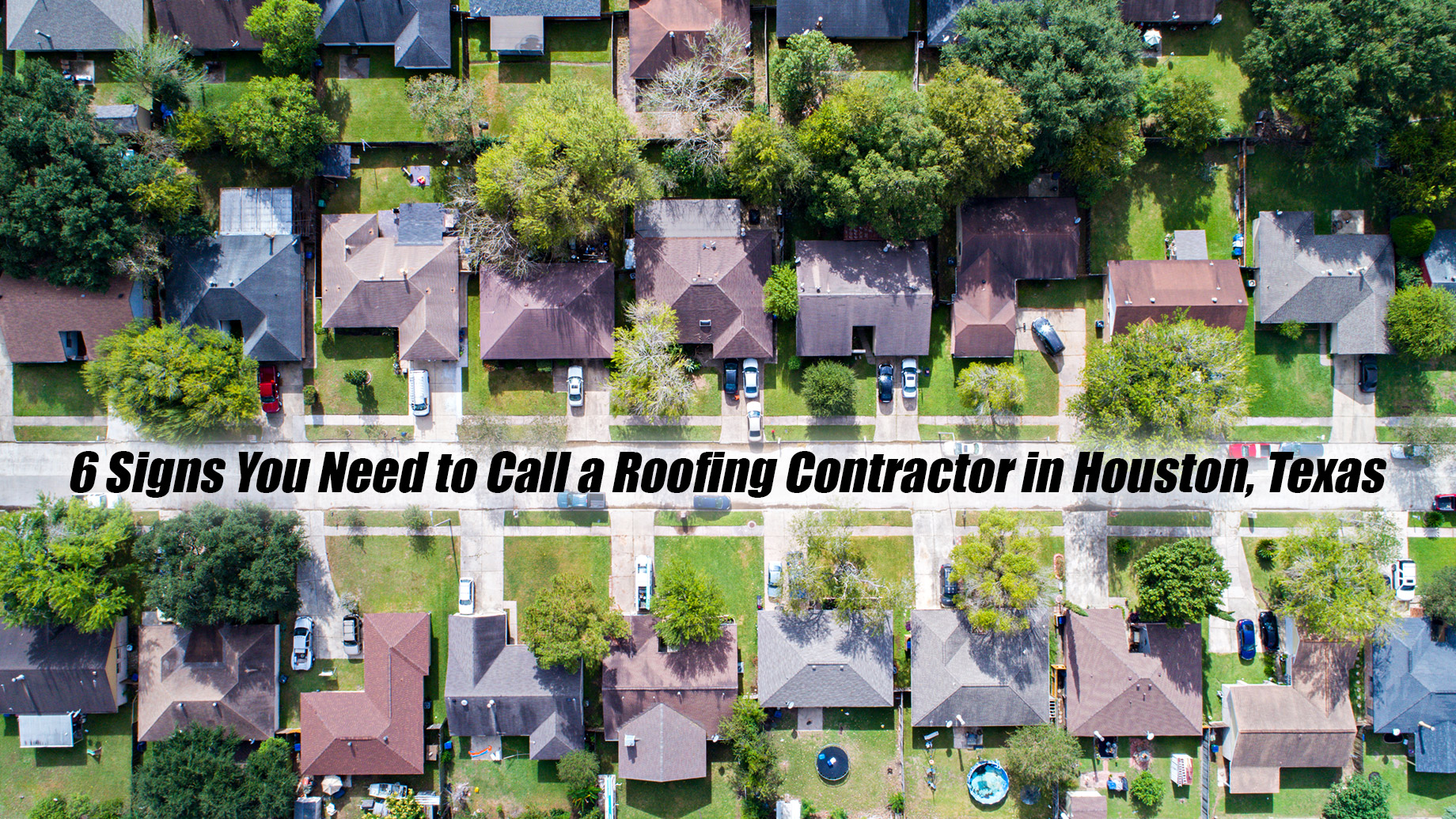
Have you ever wondered what condition your roof is in, but you’ve never gotten around to checking? You may assume it’s fine because you clean the gutters, sweep off the snow and nothing ever leaks in during a heavy shower of rain.
But the truth is that — no matter if you think your roof is okay — there could be issues. A true expert will see all the things that you don’t. Your roof may look perfectly fine to you and then all of a sudden, bam. You have a new indoor swimming pool and everything in the attic is ruined.
Luckily, you can prevent disaster by knowing when it’s time to call in an expert before a crisis hits. Plus, according to Guardian Roofing, a company that does roofing in Houston, TX, “Proper ventilation, lesser leaks and sufficient attic insulation makes your home more energy-efficient. Calling in a roofing contractor to solve early problems will save plenty of time, hardship and money in the future. Here are six signs you need to call a roofing contractor.”
1. Bad Weather
Weather is what will always be hardest on your roof. Between harsh rain, hail, violent winds, ice and snow, the aftermath of all of them is reason enough to call in a roofing contractor to give your roof an inspection and make sure nature hasn’t done any damage. Uncaught damage may be the reason that the next time mother nature takes out her wrath overhead, your roof doesn’t survive it. Take precautions.
2. You Notice Your Neighbor Having Roof Work Done
If your next-door neighbor has just had work done on their roof, yours might need some work, too. Your houses could be the same age with the same level of wear-and-tear, or a passing rainstorm may have done the same damage to you as it did to them.
3. There’s Staining
When grabbing something out of your attic or storing something away, you may notice there are stains on the underside of your roof decking. Water stains may mean that your roof is leaking. If you don’t fix it now, it could get much worse until your roof gives way and your whole house is flooded.
4. Granule Loss
A sign that your roof’s shingles are breaking down is when piles of black and grey granules start to appear in your gutters or downspouts. Watch out for them when cleaning your gutters, and make sure any help you hire to clean them is aware that you want to know if they spot any such issues.
When your shingles lose their texture, they become less effective at protecting your house. You’ll be more susceptible to leaks and storm damage with shingles that aren’t doing their job. Everything has a lifespan, and it’s important to pay attention to it.
5. Missing Shingles
Looking up at your roof, you notice something is off. You look down and there’s what appears to be a roof shingle by your foot. One missing shingle could mean a whole host of them are loose and ready to join their teammate on the ground.
Ice, snow and windstorms can all damage the nails that are keeping your shingles secure. After repeated minor damage, major damage could be right there on the horizon.
6. Your Roof is Old
The older the roof, the more likely it is that there’s damage. If you’re just moving in or out of an older house, you should definitely call a roofing contractor to take a look before you make any more plans.
If this is your forever home, you should get periodic checkups as the years go by just to make sure your roof stays in top condition. Don’t make the mistake of neglect.
Inspecting Your Own Roof
Although it’s important that an expert contractor looks over your roof when necessary, you can learn to do some inspections yourself.
First things first: be safe. If you’re not physically healthy enough to do this yourself, don’t. If your ground is uneven and your ladder unsteady, stay down. Be careful. A broken roof is more desirable than a broken bone.
Here are three steps you can take to inspect your roof:
1. Look Up from Below
Grab a pair of binoculars and look for any cracks or slipping shingles. This is by far the safest option.
2. Clear Debris
Once you reach the roof via a stable ladder, look for moss, leaves, stones dropped by birds, or stray Frisbees you’ve forgotten about. Be sure to clear all of these hazards as growths and pointy things can cause leaks. But be careful if you decide to walk on the roof. If there are weak spots, you could fall through.
3. Look at the Counter Flashing
The metal strip installed in the areas requiring additional water protections is called the counter flashing. Check that the sealant around the edges is secure, and make sure the strip itself isn’t damaged.